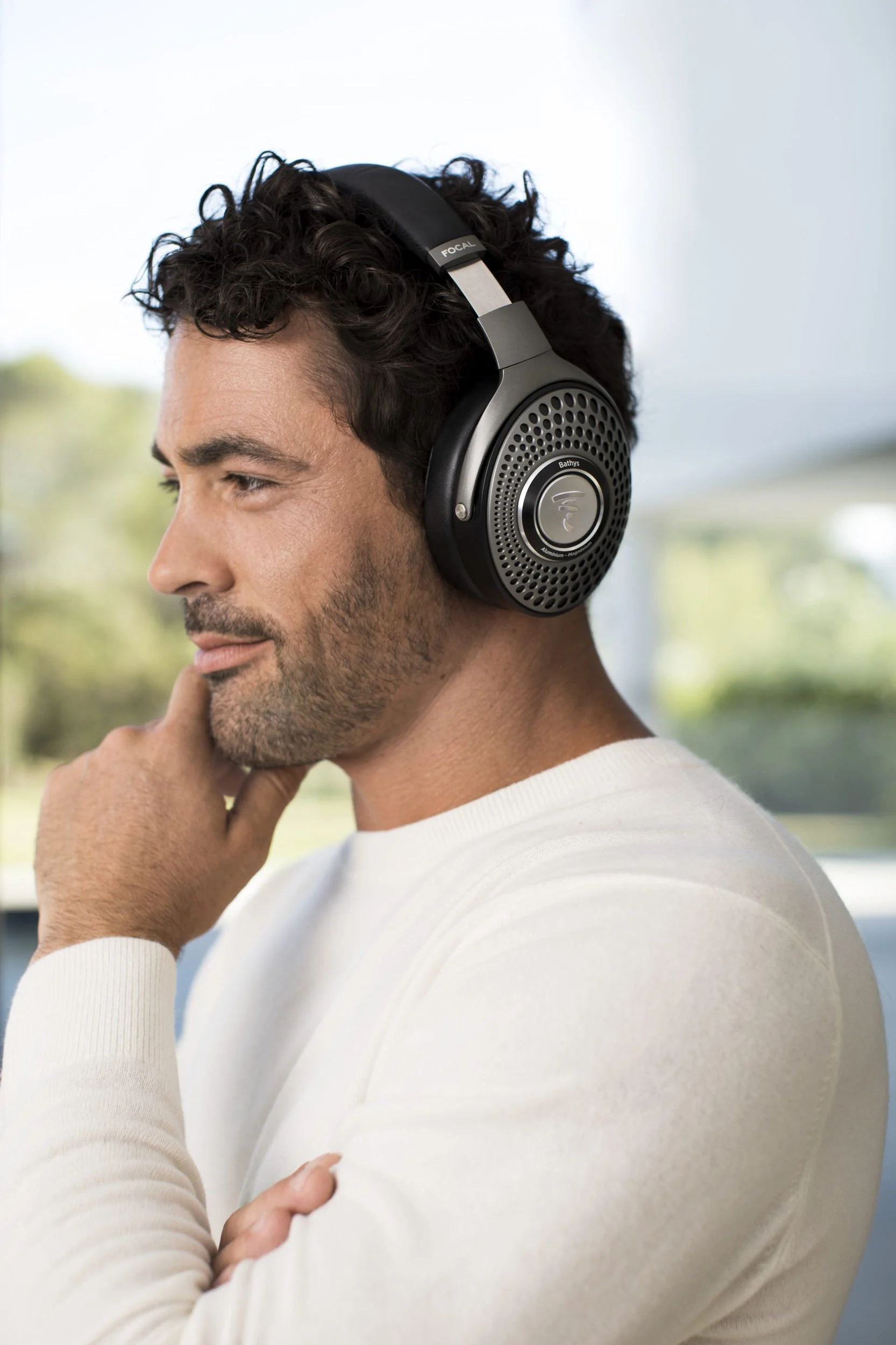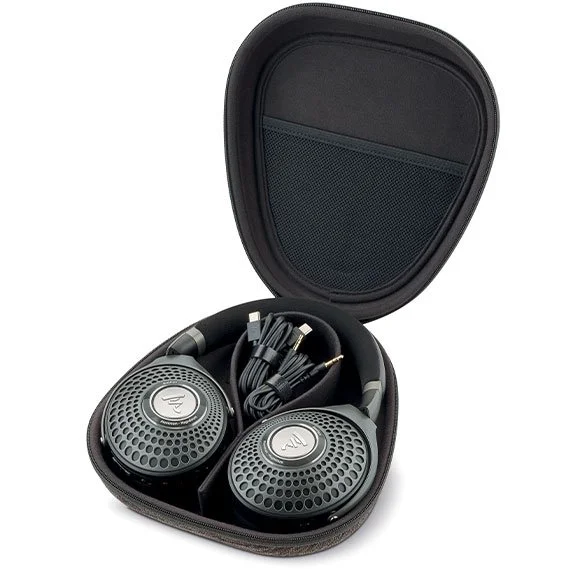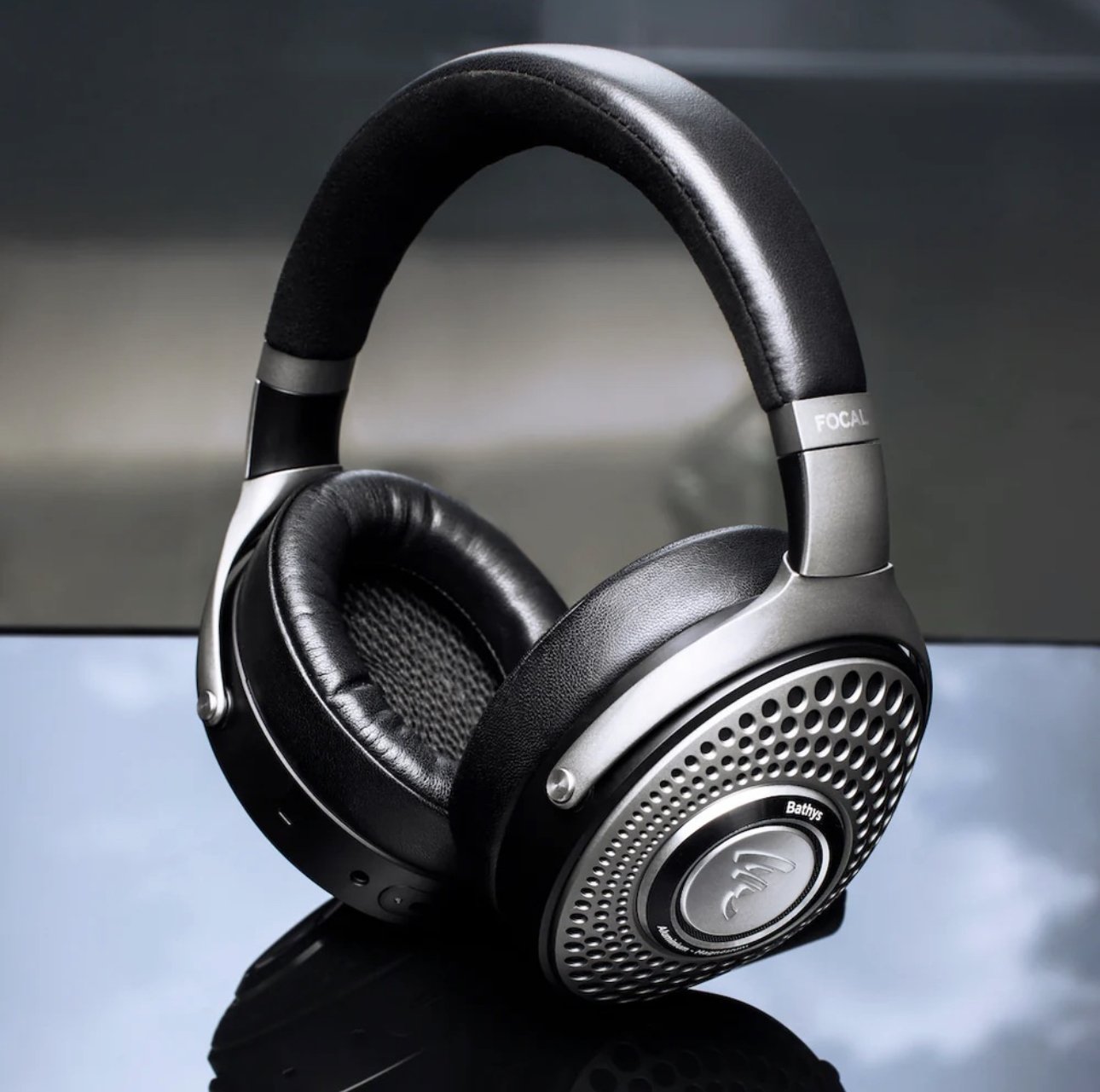Focal Bathys Hi-Fi Bluetooth Active Noise Cancelling Headphones
The continued interest in Bluetooth headphones and their technology have audiophiles trying to keep up, and since I love headphones, I welcome the challenge. The competition keeps getting stronger and choosing a high-end headphone has become something of an expedition to a high and steep mountain, where one needs caution, and knowing the trail keeps us from losing ourselves along the way. The following is a review of the Focal Bathys Bluetooth Active Noise-Cancelling (closed-back) Headphones ($799).
Specs
Bluetooth technology: 5.1 Multipoint
Bluetooth range: >15m/50ft
Audio codecs: SBC, AAC, aptXTM Adaptive, aptXTM
Battery life: 30 hours Bluetooth Noise Cancelling, 35 hours Jack mode, 42 hours USB DAC.
Voice assistants: Google Assistant, Amazon Alexa
Speaker drivers: 15/8" (40mm) Aluminium-Magnesium ‘M’-shaped dome
Frequency response: 15Hz to 22kHz
Harmonic distortion rate: <0.2% @1kHz
Microphones: 8 with Clear Voice Capture
Weight: 0.77lb (350g)
Carrying case: 97/16"x81/4"x23/4" (24x21x7cm)
Control application: Focal & Naim, iOS and Android compatible
Connections: Bluetooth / Jack 3.5mm / USB-C
Back in 2017, Focal came out with their first wireless headphone (wired option too), the Focal Listen. I remember they didn’t create a lot of buzz with audiophiles—it was a closed-back headphone and the design was, let’s say, interesting. They came in glow-in-the-dark style colours, a simple gamer-style design with not very good frame stability/suspension. They folded completely and when I had a pair on loan, I was constantly worried about scratching the outer part plastic of the cups. The Focal Listen had good sound quality and a low bass response that made them a good pairing for upbeat music; but in the short time I listened to them, they weren’t very comfortable and had sound leakage as well. The Focal Listen was a good first try at a wireless headphone, but they didn’t have the fine Focal sound I now know.
Design and Build
I’ll just come out and say it, Focal is my favourite headphone brand, and yes, our listening experience is subjective, but their tone, tuning, soundstage and aesthetics, for me, have not been rivalled by similarly priced headphones. Besides the newest Utopia headphones (2021), I think I’ve listened to every other Focal model.
I was not surprised that Focal went all-in to this market and it’s clear they wanted a new wireless component that could deliver the goods. Focusing not just on design and Active Noise Cancelling (the Focal Listen didn’t have this feature), Focal wanted to go head-to-head with other wireless headphones and beat them with their sound quality (more on this later). Along with the wireless, ANC, and beautiful design, you can also use them with a wired connection, to your phone, tablet or laptop for a more stable experience.
But Focal has another exclusive technology up their sleeve, they have an integrated USB-DAC with 24 bits and 192 kHz resolution in the Bathys cans. I was so excited about this new feature that I pre-ordered a pair. When Focal says ‘travel in high-fidelity’ with the Bathys, they mean it.
A black and silver frame with cool circles that embrace the Focal logo—a beautiful and statement-making pair of cans. When you see them you really need to try them on. They’re very comfortable, just the right clamp force, cushions are a little wide but not tiring at all. The Bathys don’t fold completely (only flat) but enough to make it onto the slim case they come with.
The Bathys box comes with a carrying case, jack cable, USB-C cable, quick start instructions and brand content packet. They have a good range (Focal states 15 meters (16.4 yards). Like many other new high-end Bluetooth headphones they have modalities of noise-reduction/cancelling: Silent, the highest level of noise reduction, Soft which reduces noise to hear some ambient noise and, Transparency mode with ‘full’ ambient noise. I found each of them satisfying for the environment where you find yourself, be this a coffee shop or in your office. The ANC is very good, but (like all other wireless cans) still chasing the superb ANC from the Sony XM-5. Pairing it with my tablet and cell phone was the easiest of all my wireless cans. I found the manual buttons (almost all on the right cup) to be a little bulky, but I understand this is to easily find them. On the right cup, you find: volume, Bluetooth, On-Off-USB/DAC, and voice assistance, the only button on the left cup is to change the noise reduction/ANC mode.
I did make phone calls from the Bathys and the eight microphones and Clear Voice Technology showed their capabilities; an excellent listening experience. I used the app to change the noise reduction modalities while on calls and was surprised at how well they operated.
Focal went the route of Sony, Mark Levinson 5909, Bowers & Wilkins and created an app that controls the ANC and serves as EQ controls as well. This app is the fastest to connect and I found the easiest to navigate. The EQ has different presets, neutral, home (a little more bass), loudness (heavy on the mids), dynamic (Harman curve) and your custom presets. Some will have fun with the LED light Focal sign on the cups that turn on and off (works from the app), but since I’m not a fun person, I didn’t find it that interesting.
Audio Components Used
Headphones: Sony WH1000-XM5, Mark Levinson 5909, Bowers & Wilkins PX 8.
Amplifier: ifi Audio ifi Audio xDSD Gryphon Headphone Amplifier/DAC.
The Bathys Sound
The drivers, as with some of their other models, are aluminum/magnesium “M” dome speaker drivers and I loved their detail and soundstage, Focal says it’s a dynamic pure high-fidelity sound and I wouldn’t disagree.
When I compared the Mark Levinson 5909 and the Bowers & Wilkins PX8 headphones, I had a pretty good idea of what differences in sound I was listening to. The PX8 (though a little too big for my head and lacking clamping force) were a fun pair of cans that did everything right The mids and especially the bass (mid and low) for jazz quartets for example, were embraced by these headphones, developing a wonderful and colourful sound. I was tapping my feet, excited to have them on my head, with the mid-range perfect for strong guitar riffs and vocals, the most fun (if not the best) headphones I’ve tried in a long time.
On the other hand, the Levinson managed to get my attention with the detail and an astonishing clarity and liveliness you would never expect from a Bluetooth headphone. They may be the best for audiophiles on the market right now, but I’ll say they’re also not fun, they’re for the enjoyment of a different kind, a fancy dinner and dessert in a five-star restaurant kind of way. Now, which one are you? Are you more of a fun type or a silent and delicate audiophile listener? Well, I have good news for you, the Bathys is the one in between. It’s fun and high-end audiophile grade in my experience.
There’s a smooth quality to the Bathys that even the Levinson’s lack, and I think that it’s in part because the highs have a slight boost before going into the sibilance space. Instrumental separation equals the Levinson 5909 and they beat the Levinsons in soundstage hands down. The Bathys has a silky low-mid range and the smoothness the 5909s lack. The Bathys engage in a surprising form. The only issue I have with the 5909s is you don’t get a lot of volume with them, they’re neutral frequency dims that possibility, not with the Bathys. The music sits on a wide soundstage and not just on your sides (which is a common denominator with closed-back cans) but embraces the entire range of the listener.
They cost less than the Levinson 5909, and the Bathys sound doesn’t shy away from the audiophile quality of the Levinsons. If you would ask me to decide, I’d probably choose the Levinsons—I like that they’re smaller and the aesthetics and neutral sound are more to my taste. The Bathys can feel a little bit plasticky to the touch and the buttons are a little big, but many people will like this. In general, the Bathys are more fun to listen to as well as more comfortable and have a more user-friendly firmware and app.
Caroline Shaw’s Partita for eight voices is a beautiful and complex composition that goes from voices in harmony to moments of disruptive chatter and noise. The Bathys developed a unique crescendo to the recording that blew me away. What sets these headphones apart is their dynamic driver's subtlety and complimentary sound. You wouldn’t think a closed-back headphone could have the ‘air’ to bring out that detail, but it does. With its bass-filled songs, Daft Punk’s Random Access Memories rang through in a crisp and non-fatiguing way. I also tried some Alice in Chains, the best studio album of theirs Jar of Flies, the open chord voicings and Layne Staley’s gut-wrenching vocals were superb. Did I say Levinsons nudging the Bathys?
Lastly, I will say that the USB-DAC (as well as the drivers) need to have a burn-in period as with every component. I heard a little distortion when I used it for a couple of weeks, but after 20 hours or so, the distortion was gone.
Conclusion
The USB-DAC is a deal changer for me. The technological advances and trickle-down with headphones seem endless. This will leave wired cans the task to compete with these new technological wonders.
If you want audiophile quality, this is the best-sounding Bluetooth headphone for under a thousand dollars without a doubt. If you want a little bit of softer sounding and cleaner aesthetics, shoot for the Levinson 5909. Something I’ve been understanding more with more experience in the audiophile game is that you should try to search for your sound. Bluetooth headphones are bidding for just that, and you need to listen to compare if the fit is right for you. Sound-wise, these $799 Bathys are fantastic. Get them, you won’t regret it.









